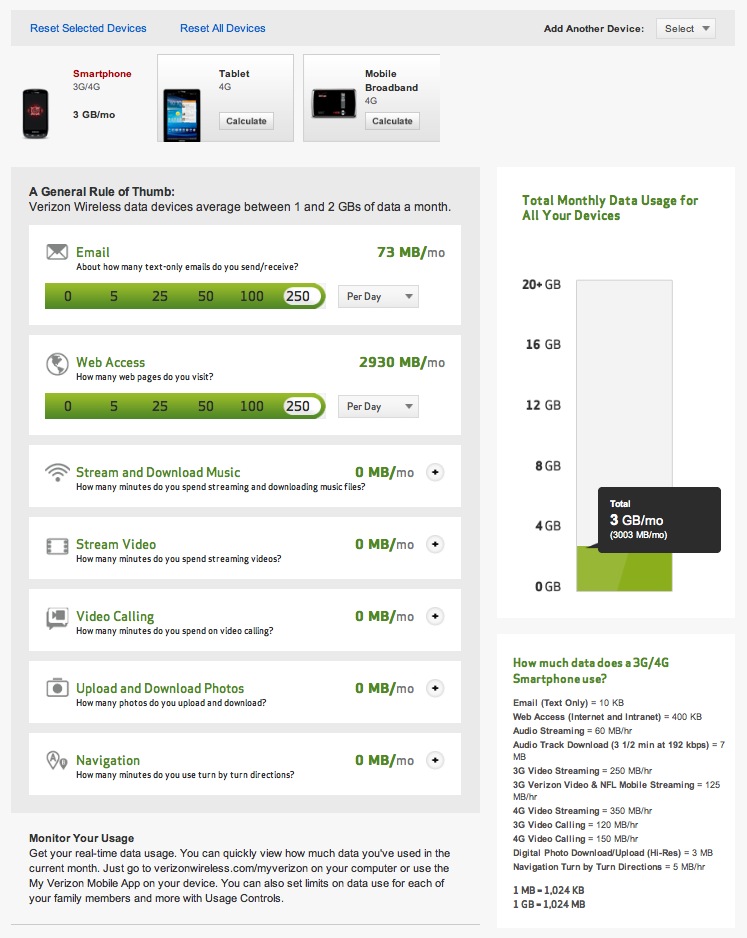When I first saw the Verizon Data Calculator page, I was impressed and felt it was a meaningful way to empower customers.
As I began using it, I realized that it’s simply too complicated for the average person with multiple devices to ‘estimate’ their daily data usage and monthly totals.
To effectively use the data calculator, for each of your devices you must estimate the following:
- how many emails you send and receive on average per day
- how many web pages you visit daily
- how many minutes you spend listening to music
- how many minutes spent watching video
- how many minutes spent on video calls
- how many minutes spent uploading/downloading pictures
An Impossible Task. As you might imagine, accurately knowing your data usage across multiple devices is almost impossible. Other than tracking usage in real-time, we don’t really know what the daily demand might be. Each day is different. One never really knows how many emails they will receive in a day. That’s up to the senders and not something you can control or be frugal about and cut back on.
What About Software Updates? An entire category of downloads completely missing from Verizon’s data calculator are the operating system and app updates. If you’re using a 4G wireless hot spot (one of the devices provided by the calculator), and your Windows computer decides to start downloading updates in the background, you won’t even know it. There are many other updates that can take place from Dell, HP, Adobe, and Java.
What About Malware? If you have a virus or malware, it could be performing data intensive tasks without your knowledge.
What About Advertising. Advertising on web pages has now become more graphics intensive. Some ads have animation, video, and even sound. This all takes up more of your monthly bandwidth.
Blame Shifting. As one explores this further, it becomes clear that the calculator is simply a sophisticated blame shifting mechanism whereby Verizon can make the customer feel responsible for data usage overages. You can jut hear the customer service representatives now saying, “Oh, I’m sorry your bill was so high. You must not have been using our data calculator on a daily basis to continually estimate your data usage. You really must keep better track of all the different kinds of data you’re downloading. There’s nothing we can do.”
Mobile Phone Contracts All Over Again. It’s as if we’re returning to the days when people were asked to estimate their daily minutes of talk time. When you went over the monthly limit, you felt that it was your fault for not tracking your minutes every day on the phone. Who has time for such details anyway? Are we expected to completely stop talking on the phone because we’ve reached our plan limit? Similarly, are we expected to stop texting and emailing because some arbitrary data limit is reached? How is it that some mobile service providers can offer unlimited data plans, while others only offer a limited amount of GB per month?
The High Cost of Information Services. It’s now common for the average person to be spending hundreds of dollars each month for landline phone service, home Internet, cable television, satellite television, movie channels, Netflix, Hulu, mobile phone service, mobile data plans, online newspaper subscriptions, and more.

